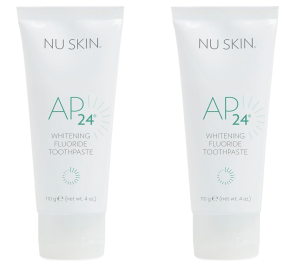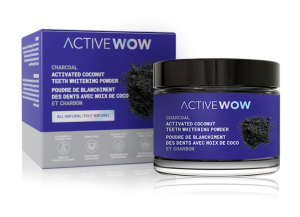Do you have yellow teeth? Are you wondering what causes yellow teeth, even though you have impeccable hygiene? It’s natural to be conscious of your smile, but yellow or off-white teeth aren’t necessarily a sign of poor oral health.
There are many factors that contribute to tooth color. Some are within your control, but others are not.
Keep reading to find out the answers and solutions to the following:
- Why do teeth turn yellow?
- How to clean yellow teeth
- What causes yellow teeth in children?
- How to get rid of teeth stains
- How to whiten stained teeth naturally
- What should your normal teeth color be?
- Yellow-stained teeth after braces
So find out what causes teeth to yellow, and how to turn your yellow teeth to white again. With so many different solutions to try, both natural and chemical dentistry procedures, we hope you find one that works for you so you can get back to smiling with confidence.
If you’re fed up of having yellow teeth, here’s a solution that gives lasting results without the expense and inconvenience of visiting a dentist.
Snow’s revolutionary teeth whitening system has already whitened the yellow teeth of more than half a million smiles this year, with 99% customer satisfaction. Their kits contain a year’s worth of treatments, and it only takes 9 minutes a day to get rid of yellow teeth stains.
Discover what makes Snow different to other whitening kits.
Yellow teeth myths
Many of the ideas people have about yellow and white teeth are not necessarily true. The same goes for teeth whitening myths. Have a look at the following teeth yellowing myths and see if any pertain to you:
Myth 1: Teeth are naturally bright white
A few lucky people may be blessed with pearly white teeth, but most people’s teeth are naturally a couple of shades darker. In fact, really bright white teeth can actually look quite unnatural. Natural teeth are usually tinged with yellow or grey.
To understand the reason why, let’s take a look at the anatomy of the tooth:
On the outside, we have a layer of enamel, which is a blueish-white color. But enamel is translucent, which allows the layer of dentin below to show through. Dentin is a darker yellow color, and this is what gives teeth an off-white appearance.
So, it’s really the shade and thickness of your tooth enamel which determines the color of your teeth. If you brush and floss every day but your teeth are still yellow, it may just be that they are naturally that shade.
Myth 2: Yellow teeth are unhealthy
This is a myth pushed on us by companies who want people to spend hundreds of dollars getting a “perfect” Hollywood smile.
Although yellow plaque deposits and heavy staining are not healthy, it’s quite possible for perfectly clean and healthy teeth to be a shade of yellow. Teeth whitening procedures often work by stripping or penetrating the outer layer of enamel, which weakens teeth if repeated numerous times. So in many cases, off-white teeth are stronger than bright white ones, as long as they are kept clean.
Of course, you may still want to improve the esthetic appearance of your smile by whitening your teeth, and we have some more information about that below.
Myth 3: You will get yellow teeth with braces
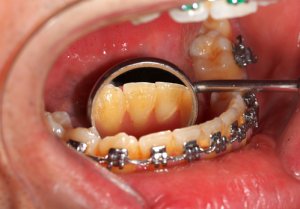

Some people do end up with stained teeth after braces, and even white spots, but it’s not necessarily the braces themselves that are to blame. Bacteria can easily build up around the brace brackets so it’s important to be extra careful with cleaning your teeth and flossing during this time. If you keep up a good oral hygiene routine, wearing braces doesn’t have to result in discolored teeth.
If you’re worried about fixed braces discoloring your teeth, you could consider a different style of braces. Lingual braces are fixed behind your teeth so any marks they leave are hidden inside your mouth. Alternatively, “invisible” braces are removable so you can clean your teeth as normal.
On a side note, if you wear metal braces with colored bands, did you know the color you choose can make your teeth look brighter or more yellow? Read more in our full article on braces colors.
So why are my teeth yellow?
So, your teeth are yellow.
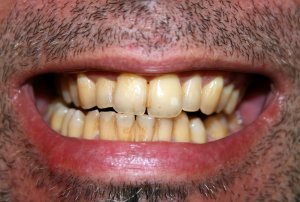

The good news is, you are not alone in having teeth that are yellow or off-white, and it might not necessarily be a bad thing.
But why are your teeth yellow? In the next section, we’ll look at the things that may be responsible for your teeth yellowing. But before we begin, you can take a look at this list that summarizes the biggest culprits of teeth stains:
- Does turmeric stain teeth? Yes! Turmeric can temporarily add a nice yellow hue to your teeth. Ironically enough, some people use turmeric as a teeth-whitening home remedy.
- Does coffee make your teeth yellow? Absolutely! Besides turning your teeth brown or yellow because of its color, coffee also contains tannins which make it easier for color to stick to your teeth. Tea stains teeth in the same way.
- Does vaping make your teeth yellow? Sure! Maybe not as much as straight cigarettes but vapes still contain nicotine we can cause yellowing.
- Does chocolate stain teeth? Yup! Chocolate can stain teeth because of its color, and dark chocolate can stain teeth because it has tannins.
Now that you know about some of the major players in the teeth staining game, let’s take a closer look into why certain foods and activities stain teeth.
Tobacco stained teeth
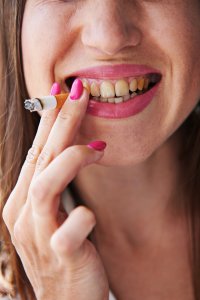

Smoking makes your teeth yellow because of the tar, nicotine, and other chemicals carried in the smoke. These seep into the pores in your tooth enamel, staining its natural color.
A study conducted in 2005 found that 28% of smokers had moderate to severe levels of tooth discoloration, known as smokers’ teeth, compared to 15% of non-smokers. The study also revealed that smokers were generally less satisfied with the state of their teeth.
E-cigarettes may not discolor teeth to the same degree, but they still contain nicotine which becomes yellow when it mixes with oxygen.
Besides smoking stains on teeth, there are other oral health problems associated with smoking, too. For example, nicotine causes gums to recede and can lead to gingivitis and periodontitis.
Bad oral hygiene
If you notice a yellow buildup on your teeth, it’s probably plaque or tartar. Plaque forms when bacteria from food and drink particles aren’t cleaned properly from your teeth. Over time, plaque hardens to form tartar, which can only be removed by a dentist or hygienist.
This yellow coating can form on or around your teeth if you don’t brush often enough or thoroughly enough. Not only does it look bad, but it also contributes to bad breath and a whole load of other oral health complications.
Your diet
It shouldn’t come as a big surprise that the things you put into your mouth have an effect on the color of your teeth. If your teeth aren’t white, you may be suffering from:


- Coffee-stained teeth
- Tea-stained teeth
- Red wine-stained teeth
- Curry stains
- Tomato sauce stains
- Berry stains
- Soy sauce stains
- Balsamic vinegar stains
- Beetroot stains
There are other foods and drinks which, although they don’t cause staining themselves, contain acids that eat away at your tooth enamel. This reduces the ‘whiteness’ of your teeth and also leaves them more susceptible to staining. Watch out for:
- Fizzy drinks (heavily colored ones can also cause stains)
- Citrus fruits and juices
- Sports drinks
- Sugary foods
- Artificial sweeteners
- White wine and many other alcoholic drinks
Rinsing your mouth with water after consuming these products will help minimize the damage from any acid. Read more about the foods that stain teeth.
Aging and yellow teeth
As if getting older weren’t bad enough, it’s natural for your teeth to become yellow as you age. This is because the protective enamel layer becomes thinner, revealing more of the yellow dentin underneath.
Genetics and yellow teeth
If you have had yellowish teeth all your life, your parents may be to blame. Genetic variances can affect tooth color and enamel porosity—and more porous enamel is more likely to stain.
Medication or illness
Some antibiotics such as amoxicillin and tetracycline can cause stained teeth, especially in younger children. These stains tend to be darker in color.
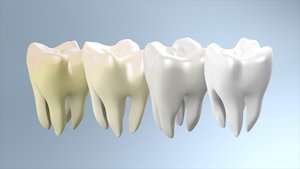

Drugs prescribed to adults for allergies and high blood pressure may also have this side effect. Speak to your doctor if you’re concerned about this.
Certain illnesses, particularly those that affect the liver, can result in discolored teeth. Patients who undergo chemotherapy or radiation treatment for cancer may also find their teeth turning a brownish hue.
How to get rid of yellow teeth
Wondering how to get rid of stained teeth? Turning your teeth from yellow to white is often easier said than done. However, if you’re wondering how to fix yellow teeth, or how to fix stained teeth, there are several approaches you can take depending on your budget, the results you want, and how quickly you want to see a difference.
How to clean yellow teeth
Want to help your yellow teeth become white? You should visit your dental hygienist every six months for a scale and polish unless your dentist recommends otherwise. Getting your teeth scaled involves removing any tartar build-up and then polishing the surfaces of your teeth with special instruments.
You might be surprised at how much brighter your teeth appear after this. But if you want more drastic results, you’ll need to look at your options for teeth whitening.
Before you do, you might want to watch this short video where a dental assistant explains the possible side effects of tooth bleaching:
Teeth stain removal at home
Wondering how to remove stains from teeth at home? There are many affordable and effective ways to whiten your teeth at home with home remedies for yellow teeth. You can buy teeth whitening strips, pens, bleaching trays, LED kits, color corrector serum, and more in your bid to brighten your smile. There are also various natural ways to remove staining from teeth at home. Each of these methods varies in cost, effectiveness and ease of use.
How to whiten yellow teeth with a home whitening kit
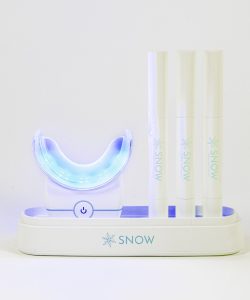

Would you like to know how to whiten yellow teeth? Or how to remove stains from teeth at home? Generally speaking, home treatments won’t be as effective on badly yellow-stained teeth as professional treatments, unless you opt for an option on the higher end of the price range. Thankfully, even these options are much more affordable than in-office whitening procedures.
One of the best at-home whitening kits that yields results comparable to those you’d get in-office is Snow Teeth Whitening. Snow has taken the at-home whitening market by storm, with enthusiastic endorsements by a number of celebrities.
When you purchase a Snow kit, you can also get their special whitening serum that can be used even on sensitive teeth, and an LED mouthpiece that accelerates the whitening process.
There’s even an app that lets you control the exact level of whitening you want! Many people see results after just one or two whitening seasons. Go to Snow’s website to check out the best deals and order your kit! We also have some Snow teeth whitening reviews which you can view for more information.
If you want to read more about how to whiten yellow teeth at home, check out our guide to the best teeth whitening kits to help you choose the right one for you.
Use a stain-removing toothpaste
There are many toothpastes on the market that claim they will get rid of yellow teeth, but the results can vary widely. Here we’ve picked out some of the best whitening toothpastes.
One very popular and effective stain removal toothpaste is Nu Skin AP 24. It doesn’t contain peroxides so it’s gentle for everyday use. Instead, its formula contains silica and aluminum hydroxide and many users find it starts to remove teeth stains within a few days.
Even better, AP 24 contains dentist-recommended levels of fluoride, so it continues to strengthen and protect your tooth enamel while you’re removing those yellow stains. You can find out more about it in our AP 24 toothpaste review!
How to whiten stained teeth naturally
Before turning to chemical whitening methods, you might want to know how to make teeth white naturally from their yellow condition. So why not try some natural ways to fix yellow stains on teeth? A quick online search will bring up all kinds of alternative techniques that people swear by, but here are some of the most popular:
- Activated charcoal
- Coconut oil pulling
- Baking soda
- Apple cider vinegar
Baking soda is one of the most tried and true natural ways to whiten teeth, and studies like this one from the ADA about how baking soda can be used for whitening teeth, back the science behind it.
Additionally, some natural toothpastes include ingredients like baking soda or charcoal to help with whitening, although the abrasiveness of these may cause sensitive teeth with prolonged use.
If you’re looking for a natural way to whiten your teeth, Active Wow’s charcoal powder comes highly recommended. It’s made in the USA from high-quality activated coconut charcoal. Rather than raw powder, it’s mixed with bentonite for remineralization and orange seed oil for anti-inflammation. The mint flavor is more appealing to some people than an unflavored product. Many users are surprised at the results they get from something that’s so affordable.
We have a full article on the benefits of activated charcoal for teeth whitening so check that out if you want to know more.
In-office whitening treatments
For more drastic results you’ll need to head to the dentist. Brown stains on teeth or black stains on teeth can be slow to respond to DIY treatments.
How to whiten yellow teeth professionally
Wondering how to remove stains from teeth instantly? Probably the most effective way to make yellow teeth white is to visit your dentist for a course of professional teeth whitening. Using lasers or LEDs with concentrated bleaching products, you can get results in a single visit. It won’t come as a surprise that these treatments are also the most expensive.
Want to know more about different whitening methods and how effective they are at getting rid of teeth stains? We covered this topic in much more detail in our guide to teeth whitening costs and methods.
Veneers for yellow teeth
If your teeth are not just discolored but also crooked or chipped, you may want to kill two birds with one stone by getting veneers. These thin covers are placed directly onto your existing teeth. They can be made to match your natural teeth if you just need one or two, or you can transform your smile with veneers across all your visible teeth.
How to prevent yellow teeth
Whether you have coffee-stained teeth or naturally yellow teeth, you can help prevent any further yellowing by taking good care of them. This means brushing your teeth properly twice a day and flossing at least daily. Use a fluoride toothpaste as this helps strengthen enamel. You can also use mouthwash, but don’t rinse immediately after brushing since this can wash the fluoride away.
And remember that list of foods and drinks that stain or damage teeth? Try to limit your consumption of these, or at least rinse your mouth with water after you have had them.
What you eat not only plays a role in your overall health, but it may also determine the color of your smile. Many people eat and drink foods every day, not realizing that some of those foods are slowly staining their teeth overtime. However, you can work to prevent stained teeth by:
- Limiting stain-causing drinks, like coffee, tea, soda, and wine.
- Being sure to rinse your mouth with water after consuming fruits like blueberries, pomegranates, and others that have natural dyes that can stain your teeth.
- Brushing your teeth in the morning and at night, for two minutes each time, using a whitening toothpaste if desired.
- Flossing each day.
- Seeing your dentist for deep cleanings and whitening treatments if needed.
Dr. Ania Mohelicki, Dr. Ania
What to do if your kids have yellow teeth
Do you have a child or toddler with yellow teeth? Keep in mind that a child’s milk teeth are usually whiter than their permanent teeth. Don’t be alarmed if their first adult teeth seem quite yellow in comparison to the remaining baby teeth.


Whether your child has yellow baby teeth or yellow permanent teeth, kids’ yellow teeth may be due to some of the same reasons as adults’ discolored teeth, i.e. diet, poor oral hygiene, genetic factors, medications, and illnesses.
Take the same precautions as you would for yourself; brush well twice a day and limit sugary snacks and other foods that may damage enamel. If you have trouble brushing your child’s teeth thoroughly, consider investing in a fun electric toothbrush for kids which might make the task more enjoyable.
Also, take your child to the dentist for regular checkups so any dental problems can be addressed early on. If you are concerned about the shade of your child’s teeth, mention it to your dentist at your next visit. Avoid using any whitening products, even natural ones, on your child, unless your dentist recommends you do so.
My teeth aren’t yellow, they’re brown!
Brown stains on teeth, and brown stains between teeth are likely to have be caused by the same factors as yellow teeth, with some exceptions. Brown stains on teeth are usually caused by:
- Using tobacco products
- Dark food and drinks
- Severe fluororis
- Buildup of tartar
- Medications
- Age
- Exposure to chlorine from pool swimming
- Recreational drugs
- Multivitamins
Black stains on teeth will also share the same causes. And the good news is, if you’re wondering how to remove brown stains from teeth (or black stains too!) the methods will be the same as the ones we mentioned above for yellow teeth stains.
Conclusion
Our teeth can be yellow for a variety of reasons, whether it’s their natural color, or it’s due to the thinning of enamel or a build-up of plaque. If your teeth are healthy but you’d like them to be whiter, there are a variety of things you can do, including professional whitening, home whitening kits or using a whitening toothpaste. Remember that teeth aren’t naturally completely white, but you should make sure to regularly visit a dentist so they can diagnose any problems that might go beyond the cosmetic.
If you’re ready to give your smile a makeover, one of the most effective and budget-friendly ways to do it is with Snow whitening. Their kits include enough serum for a year’s worth of treatments, plus a money-back guarantee if you’re not satisfied with your results.
Their carefully developed serum and application system are suitable for sensitive teeth and won’t damage your gums, like some other whitening kits.
Check out Snow’s product range here!
For more information, check out all of our topics on teeth whitening.
FAQs
What causes yellow teeth?
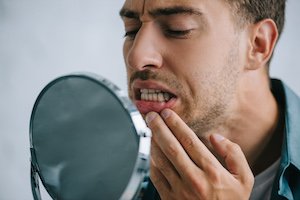

Yellow teeth can be caused by smoking cigarettes or vaping, eating foods that are dark in color or contain tannins, like wine, coffee, and dark chocolate. You can also experience yellowing as you age, or because of genetics. And even certain medications can cause teeth yellowing.
Normally, teeth are naturally a bit yellow, and it doesn’t necessarily mean that they aren’t clean and healthy.
What are ways of whitening yellowed teeth naturally?
You may be able to whiten yellow teeth naturally by using activated charcoal, coconut oil pulling, baking soda or apple cider vinegar. None of these remedies are likely to produce drastic results. You should take care when using abrasive ingredients like baking soda.
Can I have naturally yellow teeth?
You may be relieved to know that it is normal for teeth to be a bit yellow. That’s because teeth are partly made of yellow dentin, which is covered by translucent enamel. Many people with great oral hygiene habits may still have teeth that aren’t totally white, because the yellow of the dentin is showing through the enamel.
What if my toddler has yellow teeth?
This may be a sign that better oral hygiene is required. Baby teeth are normally whiter than adult teeth, and this is an important time to implement proper teeth cleaning habits.
Why do I have yellow spots on my teeth?
Yellow spots on teeth may be due to hypocalcification, fluorosis, or demineralization. Your dentist may be able to give you more information at your next checkup.
- Hypocalcification: When the tooth enamel is not fully formed, the affected tooth may be more sensitive.
- Fluorosis: Too much fluoride received during childhood.
- Demineralization: Calcium phosphate is the principal part of the mineral on teeth, and it may start to dissolve due to too much plaque. If this happens, you may experience some discoloration.
Why won’t my teeth whiten even though I’m brushing?
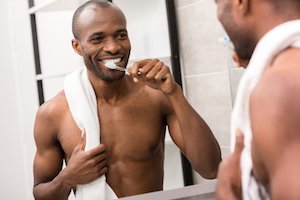

Sometimes brushing isn’t enough to turn yellow teeth to white. If you brush and floss your teeth twice a day, and your teeth are still yellow, it may just be the natural color of your teeth. Naturally yellow teeth is not a medical concern, rather it is simply cosmetic. If this is your case, and you really want whiter teeth, you may want to consider removing teeth stains with teeth whitening.
Will I get yellow teeth after braces?
Braces themselves will not discolor your teeth, but if you don’t clean properly around the brackets, you may get plaque buildup, which can lead to an uneven color.
How do you whiten between teeth?
You can whiten between your teeth the same way you would whiten the fronts of your teeth: Maintain good oral hygiene and consider home whitening or professional whitening remedies.
BMC Public Health: Smoking and tooth discolouration: findings from a national cross-sectional study. Consulted 13 August 2019. ADA.org: Stain removal and whitening by baking soda dentifrice. Consulted 13 August 2019.





